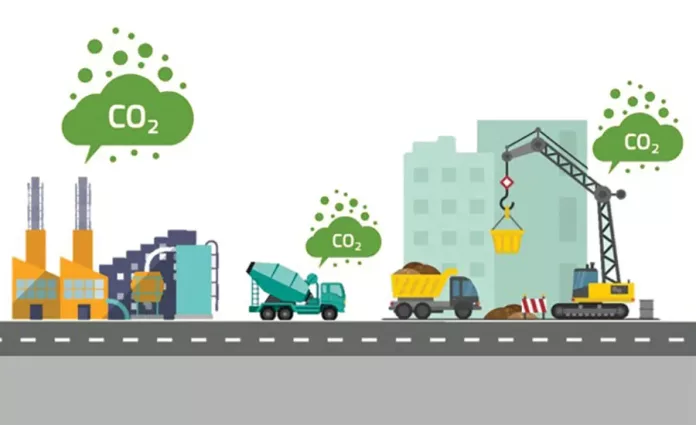When we think of a brand’s climate-responsibility, we often imagine the customary sustainability page on corporate websites claiming ethical production pay, responsibly-sourced base materials, and brand action towards a better, cleaner, and greener future. However, what a lot of them lack is transparency: how do they measure the climate promises they make? What are so-called sustainable production methods? The EU recently approved a trade policy – the Carbon Border Adjustment Mechanism (CBAM), to address the carbon-intensive production methods of its trade partners, hindering a phenomenon called carbon-leakage and calling for transparent management reports that reflect ESG policies.
Environmental, Social, and Governance (ESG) practices grew out of the overarching umbrella term Corporate Social Responsibility (CSR). Though both concepts pertain to a company’s role within its community, ESG focuses on how the company operates internally to support social movements, such as Black Lives Matter or the green economy. ESG has been magnified in the past few years as COVID-19 and protests sparked in tandem made us face the realities of human experiences next door, and around the world.
As the limelight settles onto fossil fuel producers, big tech, and mass-production clothing companies, the greenwashing fad is limping to its demise. On the podcast, “A Matter of Degrees,” guest speaker Dr. Paasha Mahdavi, professor and researcher of energy policy at UC Santa Barbara, noted that many companies, especially in traditional energy-production industries, make climate pledges that they often fail to meet. In 2021, about 70% of such companies committed to a cleaner future, but as his co-host, Dr. Leah Stokes, noted, “[these] pledges [might] look really good on paper, but they do very little to actually lower carbon pollution in any timeframe that we know is necessary.” Customers are now demanding for transparent and effective ESG commitments and impairing market-practiced “cheap talk.” In a survey conducted by PwC, 59% of consumers claimed that they wielded their purchasing power based on company values.
Investors and employees command even more power to decide a company’s future trajectory. Their influence is grouped under the stakeholder theory, whereby their satisfaction and positive view of the company, along with customer retention, awards it with a Social License to Operate (SLO) – an ongoing acceptance of the company that is crucial to its success. These advantages are only possible if companies disclose ESG specificities. No longer will stakeholders accept the vague terminology of the company’s sustainability range; instead they look for accurate, short-term measures that provide insight on the company’s ability and willingness to meet its long-term climate goals. Potential investors particularly look at this information to avoid investing in Sin Stock, or businesses that do not incorporate positive social norms into their practices. Though these “shameful”’ industries are successful in the short term, their financial longevity is limited. Investors that are already committed to a business hold even more potential to change its core values through threats of divestment. As a direct consequence of stakeholder conditions, 95% of the S&P 500 voluntarily disclosed their ESG reports, with over half of that number receiving verification of the reports’ authenticity from outside parties. As one study pointed out, the implementation of strong ESG policies is inextricably tied to a company’s financial performance.
Because of business independence and their motivating factors, companies are much quicker to change than government bureaucracy and national legislation. However, because of these individualistic standards, reporting accuracy can be undermined. Government regulation is necessary to keep industries on track to their ESG commitments, and leverage markets to limit national and international greenhouse gas emissions. This is crucial for governments to successfully meet climate goals promulgated by the Paris Climate Agreement and, particularly, the EU’s 2030 target of 55% less emissions.
After a transition period from October 2023 to January 2026, the CBAM will require importers outside the EU to monitor their emissions during production and transportation. The trade directive is based on the existing internal cap-and-trade system that limits the carbon emissions most EU industries can generate. The 27-nation bloc aims to balance the playing field between internal and external manufacturers, as well as regulate “carbon leakage.” Which is a phenomenon that occurs when EU companies move carbon intensive production abroad to countries with lenient regulation laws to dodge internal barriers, or when EU products get replaced by outside carbon-intensive versions, defeating the climate-promoting goal of the internal tax. The trade legislation is in-line with the World Trade Organization’s rules against government discrimination of foreign companies, and broadens internal trade policies to place equal pressure in the form of tariffs on importers. Importers would be required to register with authorities to calculate their product emissions. They would then buy an equivalent amount of carbon certificates valued according to the current internal market carbon Emissions Trading Scheme (ETS) to set off their footprint.
The scope of released greenhouse gasses can be categorized into “burn, buy, and beyond” emissions. The first, “burn”, pertains to all the emissions directly discharged by a business’ operations. The “buy” category encompasses the emissions, such as fossil fuel energy, that companies receive from third parties to power their efforts. The third aspect pertains to all indirect emissions that are disassociated from the business’ function itself, such as the diesel a garbage truck burns while taking its trash to the landfill. About 90% of company gas emissions fall under “beyond”. The CBAM is innovative in that it includes some of the “beyond” emissions in its tariff calculations, including the carbon emissions from the plants that supply manufacturers with energy.
When the transitional period begins in October, the CBAM will apply only to the most energy intensive industries: aluminum, fertilizer, steel, cement, chemical, and hydrogen production. However, manufacturers will not be charged with the tax until later years. For now, they will only need to provide full disclosure material to the bloc. Once the tariff is promulgated, importers will only receive exemptions or discounts from its payment if they can prove that they or their countries have EU-approved emissions regulations in place.
Manufacturers are gearing up for the directive’s implementation alongside supply chain decarbonization pressure from stakeholders. By embracing these calls to action, they can create a competitive edge for themselves and develop new green technologies – promoting company value while simultaneously avoiding the EU-sized barrier to trade. The legislation can also benefit the growing green job market, as it calls on firms with expertise to calculate product carbon content.
Unfortunately, the CBAM disproportionately affects developing countries who have historically seen lower ESG policy implementation due to their heavy reliance on carbon-intensive industries. The ESG performance of developing regions links to their government’s financial stability and democratic structure, as these institutions promote the representation of societal concerns. Moreover, as individuals rise out of poverty, carbon emissions will most likely increase before they drop, akin to the consequences of the Industrial Revolution to the largest economies today. The debate over the equal distribution of emission standards is precisely this one: is it really fair to ask developing countries to withhold the actions that developed countries took to win their fortune? Developing countries are least responsible for the dire state of climate change today and have instead acted as puppets for the developed world’s outsourcing strategy.
Affected nations advocated for a financial strategy that allowed them to procure funds for clean energy development, climate mitigation, and infrastructure rebuilding at COP27 – in order to mitigate the losses developing countries will acquire due to the CBAM and destructive weather events caused by climate change. However, most of their funding demands were not met, with meetings instead focusing on the procedural requirements to provide such aid.
We have just cause to celebrate the approval of the CBAM directive: it will force nations to face their insufficient ESG policies, pushing them to develop the green energy sector, and as the EU hopes, spread carbon-based trade tariffs globally to enforce climate goals. Companies will simultaneously adopt more transparent managing methods and use ESG policy requirements as a new source of innovation to compete in a new, green market.
The CBAM and strong business-related ESG policies have the potential to bring us closer to the future environmental and human rights advocates have been calling for for decades. However, to implement these changes successfully developed countries will need to face the heightened responsibility they possess in delivering humanity’s brighter future.








